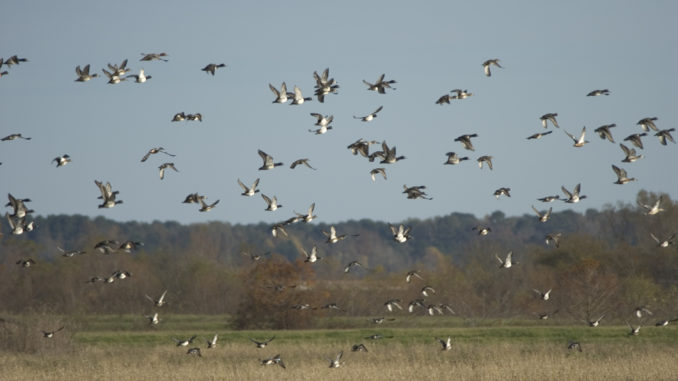
Hoping to fill your duck straps during this weekend’s opener?
Well, don’t hold your breath.
That’s the word from Larry Reynolds, the Louisiana Department of Wildlife and Fisheries’ waterfowl study leader.
“I’m about to publish the lowest November survey on record,” he said.
Reynolds has recently completed flying transects to get a rough count of duck numbers in the state, just as he does several times every fall and winter, and what he’s seen this year has been quite discouraging.
Three areas in particular were noteworthy to Reynolds on the downside.
The first was Pecan Island to Grand Lake, an area that is heavily hunted and is usually rich with waterfowl.
“I saw very few birds there,” he said.
The second was the Burn area west of Highway 27 in Southwest Louisiana.
“It’s usually full of teal and mottled ducks, but there’s virtually nothing until you get north of the Intracoastal Waterway,” Reynolds said.
The third disappointing area was Delta Farms in Lafourche Parish.
“That’s the place that often has so many birds, it kind of makes the survey,” Reynolds said. “I saw lots of (submerged aquatic vegetation), but not a bird.”
In mid October, Reynolds began getting reports from colleagues in Minnesota and Missouri saying that the migration seemed a couple of weeks behind.
“Other than that one good cool snap, we haven’t really had much cold weather,” he said.
But, he said, the real limiting factor this year is the damage caused by Hurricanes Gustav and Ike.
“Around Oct. 20 every year, we start getting ducks no matter what the weather is — whether it’s cold or not,” he said. “This year, there’s nothing to hold them here.”
He said he was staggered to see how many fields were dry during his flights.
“I know what those fields looked like this spring and summer. I know how much water they had,” he said.
He’s gotten reports that the fields had to be drained so that farmers could manipulate the ground and make insurance claims as a result of the hurricanes.
“It’s such a shame because we were really set up for a great season,” he said. “We had the high rivers all season, lots of sedimentation, lots of (submerged aquatic vegetation). Gustav and Ike sure as hell didn’t do us any favors.”
One area that seems particularly hard hit by the storms is Delacroix.
“Delacroix looks terrible,” Reynolds said.
He has a lease in the area that was 75 percent land before Katrina. Now, after Katrina, Rita, Gustav and Ike, it’s only 10 percent land.
“It’s unrecognizable,” he said.
Not surprisingly, the transect he flew over Delacroix showed very few birds.
Two areas that did show some promise were the Mississippi and Atchafalaya deltas.
“The Mississippi Delta looks great, lots of ducks,” he said.
The western part of Delta National Wildlife Refuge had a surprising number of pintail and gray ducks. Reynolds was also pleased with the amount of feed he saw farther south.
“I was very surprised at the amount of (submerged aquatic vegetation) at Pass A Loutre (WMA),” he said.
Farther to the west, the Atchafalaya Delta held considerable numbers of birds.
“The Atchafalaya Delta is not as good as it was 5 or 10 years ago, but it’s better than last year,” Reynolds said.


